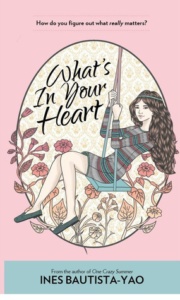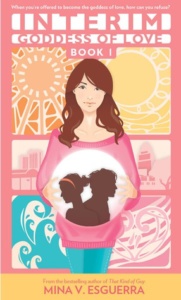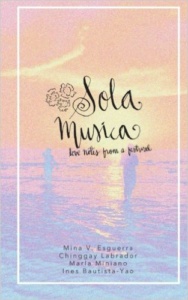The collegiate juncture of study more often than not leaves one with a certain degree of disillusionment, cloaked in the perfectly justified veil of logic. Young adult literature (YA) is but one of the many tools of escapism for millennial students looking for a brief respite from the rigors of the academe life, with names like John Green and Rainbow Rowell gaining massive success in the genre for their sharp wit and delicately woven narratives. Philippine counterparts, however, despite their being just as socially aware and culturally diverse, continue to find themselves on the receiving end of generational, perhaps colonial apathy. Here we run down a few local titles worthy of competition against the young adult greats:

Trash by Andy Mulligan
While not explicitly set in the Philippines, the characters and environment depicted in Mulligan's 2010 thriller bore a striking resemblance to that of modern day Metro Manila. The novel is seen through the eyes of Raphael, Gardo, and Rat, a trio of dumpsite dwellers who spend their days digging through piles of rubbish looking for food to eat or junk to pawn. One morning, the three come across a mysterious leather bag, the contents of which plunge them into an adventure that sees them going up against crime, corruption, and the very system that stifles them in their hardship.
Although the story tends to stray away from the lighter and brighter side of young adult fiction, it more than compensates for this theme-wise as it speaks volumes about the reality of poverty, especially in developing countries like the Philippines. The author has openly admitted to being strongly influenced by his volunteer work in the country for the story, and it shows. The diverse set of characters inhabiting the immediate environment in which the tale unfolds show remarkable parallels to those we cast blind eyes on day in and day out.

What's In Your Heart by Ines Bautista-Yao
It's not uncommon for teenagers to flock to YA titles for their bi-yearly fill of youthful mush. Sappy love stories accompanied by pretty pink covers have long been a staple in the young adult shelf, (See: A Little Something Different by Sandy Hall, etc.) and What's In Your Heart by Ines Bautista-Yao just might be the prime example of this in local literature.
The story follows 19-year-old Natividad, fresh from a breakup with a world of possibility in front of her. To deal with this slump, she interns at a local preschool, looks into her family history and begins a friendship with boy next door Luis. This plot sets the stage for an ostensibly cliche sort of adventure and in many ways, one could reduce the story to just that in good conscience. Under the surface, though, What's In Your Heart is a poignant account of navigating through the hazy landscape of youth. More than the seemingly shallow chronicling of an awkward adolescence, it's titles like this that prove there is still something to be learned from everyday tales of love, life, and youth.

Salingkit by Cyan Abad-Jugo
Award-winning author and master storyteller Cyan Abad-Jugo tells one of her trademark stories that pulls at the heartstrings, only this time with a political twist. Set in the late 1980’s, roughly marking the bubbling of revolutionary tumult, Salingkit is a coming-of-age story that revolves around the People Power Revolution. It chronicles the adventures of 15-year-old Kitty Eugenio, as she witnesses the unravelling of history before eyes- along with the baggage of having to deal with the disappearance of her activist father, her mother’s attempts to migrate to the States, and a boatload of other pubescent insecurities. The novel shifts between Kitty’s diary entries and a third-person point of view, providing a window into the past, projected by a voice that teenagers can relate to.
Abad-Jugo shares that the primary goal for her novel was to educate the younger generation with little to no knowledge about the events prior and leading up to the People Power, and sought for a way to accomplish this without leaning towards a didactic tone. Kitty’s peppy narrative traipses from a teenager’s daily qualms of swoon-worthy New Wave bands, to offering a painfully earnest perspective on the rickety state of society. After all, it is the year of 1986: the year of the Tiger, the year of Halley's Comet, the year of Depeche Mode’s “Black Celebration” release, the year of the revolution, and the year of epiphanic upheaval and societal change.

Interim Goddess of Love series by Mina V. Esguerra
The blending of genres into far more enriched, stimulating hybrids has always brought something new to the table. Cross-genres such as tragic comedy, romantic thrillers, and the like have maximized their audience by delicately applying the art of pastiche—and this is exactly what the Interim Goddess of Love series shines at. Parallel to the Percy Jackson series, only this time with a local twist, Interim is a modernized retelling of the legendary Maria Makiling fable, starring shy, unassuming college sophomore Hannah Maquiling, who suddenly wakes up one day with an influx of lovesick students rushing to her and seeking refuge in her otherwise ill-experienced and occasionally disastrous love advice, despite the fact that she has never been in any relationship. The Goddess of Love is on leave and has left the world in an absence of enamour, and Quin, an irresistibly handsome senior, who overtimes as the Sun God, appoints Hannah to take the responsibility of the missing-in-action goddess, and act as the de facto matchmaker and subsequent confidante for every juvenile heartache within the university.
Egsuerra raises the bar for Philippine chick-lit pocketbooks with her effortless intertwining of coming-of-age and magic realism. Featuring a cast composed of the gods from Philippine mythology, the four-part series incorporates mythical elements from Filipino folklore into the mundane setting of a college campus, and the adolescent drama that comes along with it.

Sola Musica by Ines Bautista-Yao, Mina V. Esguerra, Chinggay Labrador, and Marla Miniano
Sola Musica is a collection of short stories all centered around a beach music festival in Batangas on a scorching summer weekend. One of the lighter selections on this list, it’s easy to see this setting as completely stereotypical of the young adult genre. Images of barkadas enjoying the sun with reckless abandon come to mind at the idea, but the series’ defining factor is its remarkably sound musical literacy. Throughout the four stories, readers will find the series laced with a number of choice songs and bands, with the authors going as far as furnishing the appendix section with a full-on playlist.
Told through the eyes of young musicians Gem, Georgia, Jack, and Natalie, the stories focus on their developing relationships and the music they create, traipsing between themes of puppy love, adventure, dream chasing, and other forms of juvenile fluff. With the narrators’ unique style, each story leaves a different, albeit worthwhile mark on the reader, ultimately making you wish you were soaking up the sun on the beachside, surrounded by good friends and good music.
The next time you’re in need of a quick read to stave off youthful uncertainty, know that you won't have to look far. The rise of young adult literature has not been entirely confined to Western authors, and although the local literary scene may not reach the same mileage as its occidental counterparts, Palanca award-winning author Edgar Samar has been quoted as saying that “the future looks bright for Philippine YA.” In the wake of the works featured on this list, it isn’t too hard for readers to believe that notion.